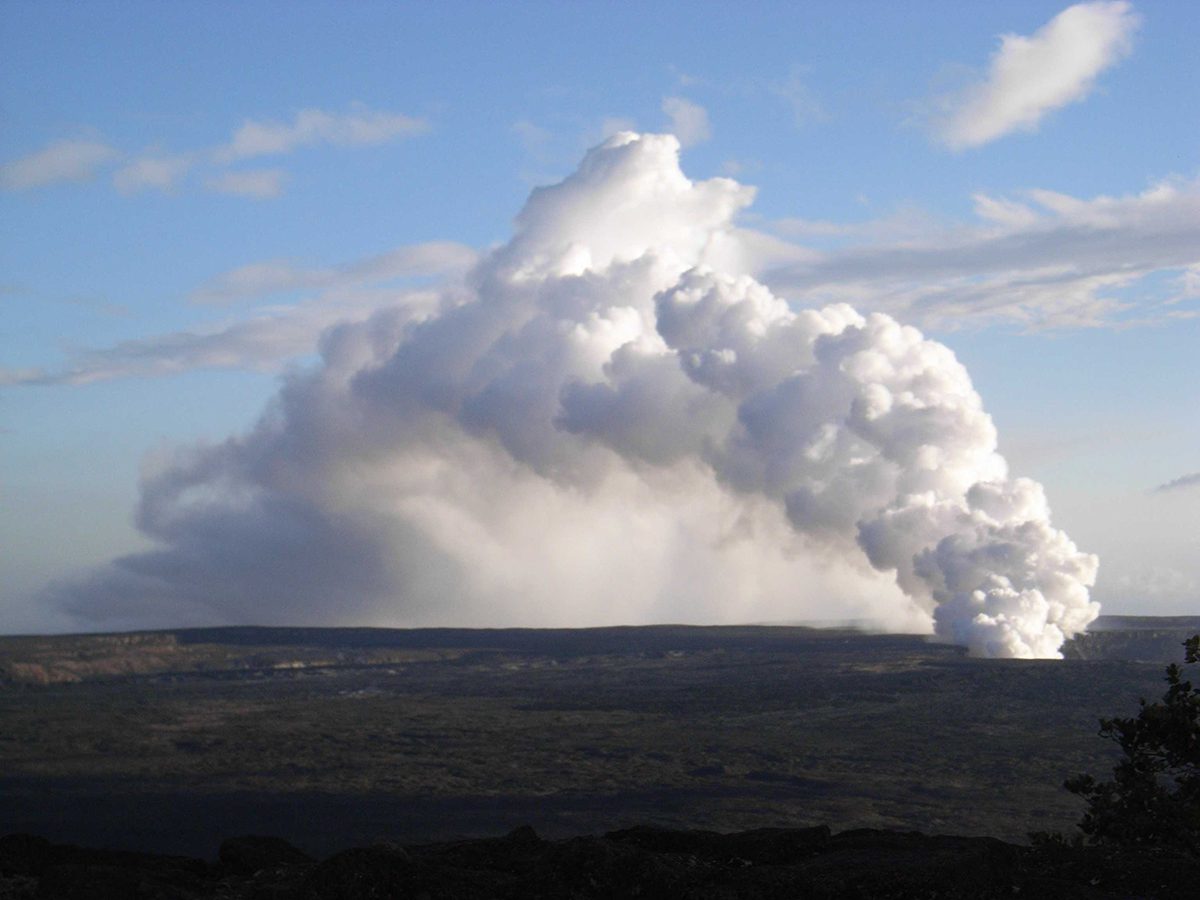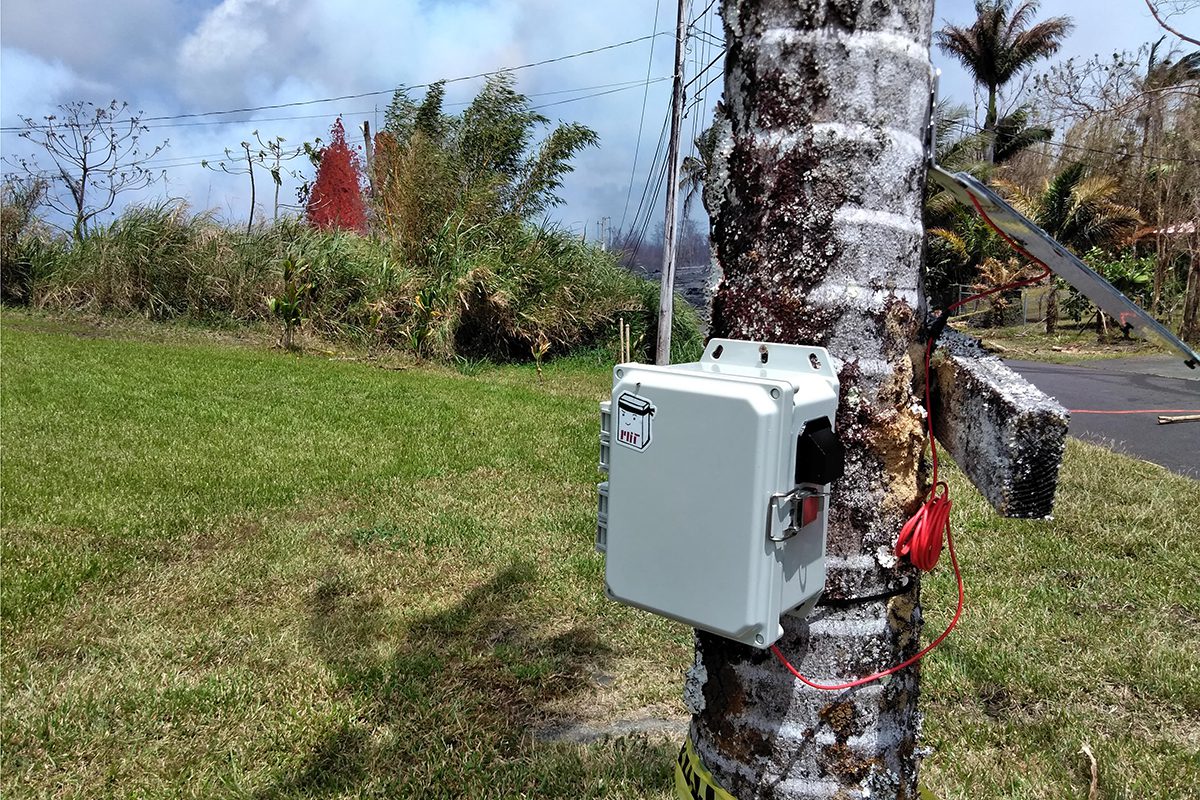
In May 2018, the Hawaiian volcano Kilauea erupted with devastating consequences – destroying homes, displacing hundreds of people and emitting high levels of dust and harmful gases. Aside from the human tragedy that this created, the eruption provided a unique opportunity to monitor the air quality of a volcano during the eruptive phase, and researchers have employed innovative low-cost sensors to do so, as part of a dense monitoring network.
The Hawaiian Department of Health operates several air quality monitoring stations on the island, but at the time of the eruption scientists from Massachusetts Institute of Technology, Department of Civil and Environmental Engineering, had already begun building a denser network of monitoring sites in response to air quality concerns relating to volcanic smog or ‘vog’.
“In May 2018, when we heard about the new eruption, we contacted our sensor supplier Alphasense in the UK, seeking urgent supplies,” explains MIT Associate Professor Jesse Kroll. “At that time we had already installed around five monitors, but Alphasense was able to rush further sulfur dioxide, hydrogen sulfide and particulate sensors to us so that we could build the network up to around 30 systems, although some of those located close to fissures were subsequently lost to the lava.”
The monitoring stations were designed and built by MIT staff. Battery powered with a solar charger, the monitors provide data in almost real-time via built-in 3G cellular communications. Readings are fed to a website that provides easy access to monitoring data with any web-enabled device – see www.voginfo.com. In addition to current readings, the site also provides a graphical display for the previous 24 hours.
MIT has worked with Alphasense since 2013 and has established a high level of confidence in their quality and reliability. Working with David Hagan at MIT, postdoctoral researcher Dr. Benjamin Crawford is based in Hawai’i, and is responsible for maintaining the network and analysing the data.
Along with regulatory air quality monitoring stations, the indicative monitors from MIT provide lower levels of accuracy and precision. However Jesse says: “Our stations are compact, lightweight and very significantly lower in cost, which means that we are able to install multiple units and undertake high density monitoring, which offers a wide range of advantages.
“Firstly, we are able to monitor in all the locations of greatest concern – in the more densely populated areas and near schools for example. Secondly, networks such as this enable the tracking of pollution and source apportionment, although in this application, there is really only one source: the volcano.
“Dense monitoring networks also offer other advantages. For example, all of the monitors can be co-located and calibrated against the same reference monitor, which improves repeatability, and if one sensor is providing significantly different readings, the cause can be investigated, thereby improving the overall reliability of data.”

The US state of Hawai’i encompasses the volcanic Hawaiian archipelago and the Kilauea volcano has been the most active of the five volcanoes that together form the island of Hawai’i. Kilauea is one of the world’s most active volcanoes; erupting continuously for around 35 years until August 2018, and representing the largest single source of sulfur dioxide (SO2) in the United States, and one of the largest in the world.
The Hawai’i project was created because high levels of SO2 and particulates from the volcano represent a threat to the health of local inhabitants as well as commercial interests including livestock and agriculture. Funding is provided by MIT’s Department of Civil and Environmental Engineering, with additional support from the US EPA and the Tata Center for Technology and Design.
MIT has worked with Alphasense on previous projects studying volcanic emissions, but Alphasense’s Technical Director Dr John Saffell says: “The eruption in Hawai’i provided a rare opportunity to study and understand the gaseous emissions of a volcano, so it was serendipitous that MIT already had staff and equipment on the ground and we were very pleased to be able to help.
“It was extremely gratifying to note that the sensors were able to perform well during the eruption in a highly aggressive atmosphere. However, one of the main reasons for the success of the monitoring program was that the sensors are relatively quick and easy to deploy, especially given that MIT had already designed the associated hardware and software.”
Looking back, Jesse Kroll says: “We were able to establish the monitoring network in time to record the entire eruptive phase, allowing us to characterise its effects on the local community. Interestingly, even though Kilauea had been erupting nearly continuously since 1983, that period of activity appears to have ended. Nevertheless, the volcano is still active; magma is still moving underground and there are still some highly localized emissions.


“We now have the opportunity to measure background air; something that isn’t usually possible with polluted environments, and this is providing us with another great opportunity to measure a different phase in Kilauea’s life. If and when Kilauea erupts again, we will be ready to measure its air quality impacts over the course of the entire eruption.”






